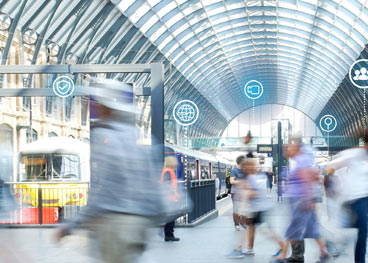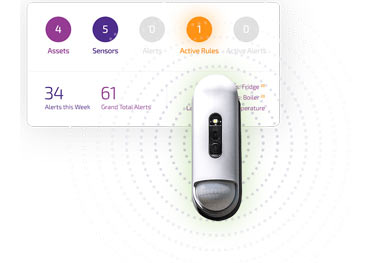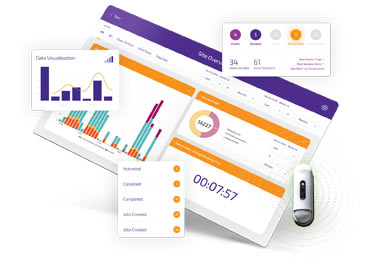Introduction
Everyday a significant amount of passengers use railway services as their preferred choice of travel whether it’s for business or leisure, the rail sector connects people and businesses and permits the economy to thrive. There is a growing demand on usage within the rail industry, with more services offered and used each day to keep up with passenger demand and expectations. Consequently, the need to drive growth whilst reducing costs and delivering a quality service within the rail sector is imperative.

The Williams Review was established in September 2018 to recommend the most appropriate organisational and commercial structures so that the railway sector can deliver greater benefits for passengers and freight users and continue to support a stronger, fairer economy. The Williams Review in numbers suggests:
- Commuters are the single biggest source of demand on railway, comprising 47% of all rail journeys in England
- Over 55% of rail journeys are made by people commuting for work and education
- 7 billion passenger journeys are made on the network and 17 billion tonnes in kilometres of freight transported
Challenges within the rail sector
The sector faces many challenges such as:

- Changing passenger expectations
- The need to meet KPI’s in order to reduce imposed penalties and the ability to ensure safer facilities for commuters and staff
- Rail organisations are being challenged to help deliver a more sustainable environment to reduce their carbon footprint
- Rail organisations are encouraging passengers to use public transport more frequently, however because of this there is an increased requirement for technology to develop and progress.
In recent years, the transport and rail industry has undergone significant change due to technological advancements. The Department for Transport has embraced these advancements in order to help the rail sector achieve SLA’s, meet compliance, improve customer satisfaction and safety, and to encourage a digitally connected market place.
The Internet of Things & the Instrumented Station
The instrumented station is the vision of the future for the rail industry as it ensures processes are automated and optimised and allows organisations to obtain a better understanding of the current situation of working environments. The rail sector can therefore transform the way services are offered by generating data from every interaction with customers and physical assets to help make informed business decisions in real time.

A key enabler of the instrumented station is IoT. The Internet of Things (IoT) is a popular term in recent years that simply describes the connectivity of an object with the internet. The rail industry has introduced IoT to innovate and improve their services, while continuing to enhance the customer experience. Alongside other technologies such as mobile workforce management, wearables, dynamic scheduling and data insights, the technology provides the opportunity to streamline processes, monitor and react accordingly to assets, and enhance passenger experience, while reducing costs.
IoT sensors can detect a range of information including the amount of footfall, occupancy of passengers travelling on a train or using station facilities as well as identifying if facilities are in a suitable state of use, or if they require cleaning or an adjustment to the temperature.
Additionally, IoT sensors can provide assistance with a range of activities such
as:

- Occupancy and footfall within stations and on platforms
- Capacity planning and monitoring such as bike rack usage, availability and abandonment and train usage based on time, dates and seasonal influence
- Smart washrooms – whether washrooms / smart meeting rooms need cleaning, bins need emptied
- Humidity, temperature of platforms (smart gritting) or meeting rooms
- Transec security checks
- Pollution monitoring
- Train delay monitoring
- Utilities sub metering
- Tracking and use of assets
- Station refuge collection
- Instrumented lifts
- Legionella monitoring
- Suicide gate monitoring
- Ticket office queue times
Train operating companies can then start to make important, informed decisions on capacity planning such as whether to provide more trains at peak times, improve communications and overall efficiencies, while aiming to reduce the risk of imposed fines and enhance the customer experience. This ultimately helps rail organisations deliver innovation and work towards providing an instrumented station to continuously innovate and ensure the delivery of market leading services.
Totalmobile in the rail sector
Totalmobile are at the forefront of creating and delivering innovative and effective solutions for the Transport and rail sector. Whether it’s the use of wearable devices, inspections and audits, smart ticketing, or ensuring services are delivered on time, our solutions ensure services are delivered smarter and safer while maintaining standards and improving the overall customer experience. Being cloud based, our solutions are secure and scalable, ensuring efficiency of services and compliance processes are met. Totalmobile’s IoT solution can automate the creation and undertaking of any required work that has been identified to streamline operational processes and enhance service delivery. The ability to action data by IoT sensor technology enables your organisation to improve passenger experience, keep services running smoothly, enhance compliance and ensure your employees are productive and empowered with the correct technology to deliver services efficiently.
The Solution

For organisations IoT deployments make service delivery easier, faster and more secure for customers by enhancing services, increasing engagement and strengthening security. Sense from Totalmobile makes use of IoT technologies, including connected sensors and rules engines, that enable the creation of work to be automated and assigned to mobile workers, without the need for human intervention. The solution maximises the potential of sensors that monitor equipment, environments and events, gathering and passing data to an IoT Cloud Management Platform. Information is then analysed, and rules engines and AI are utilised to determine if action, such as the creation of an item of work, is required. Work created can then be assigned to staff via their mobile device, streamlining the delivery of work and empowering them to provide a responsive high-quality service.
Benefits
Demonstrating Compliance with SLA’s and Standards
Health and safety is a huge element of remaining compliant in the rail industry. These organisations need to provide safe facilities to citizens and ensure they adhere to compliance standards in order to avoid hefty fines. Rail stations can benefit from real time notifications of slips, trips and hazards on platforms in order to remain compliant. IoT can be used to ensure that data is monitored and automatically stored to a consistent standard, ensuring jobs are undertaken when required, reducing human error and improving compliance with SLA’s. Historical information is also available from sensors which enables a clearer picture of issues, the steps taken to resolve them and ultimately help to resolve issues efficiently. Rail organisations can understand operational activities onsite which helps with data driven decision making.
Furthermore, the removal of paper-based processes ensures an improvement in accuracy with all information reported and available for an audit trail should it be required. Our intuitive mobile technology allows for photo, video and signature capture and mandates workflows to ensure compliance, at the same time managing the activities of the workforce. With the ability to date, time and location stamp each activity, as well as using interactive forms to record all information, your rail organisation can guarantee recording of data is accurate and consistent, ensuring compliance standards are met. IoT sensors also identify how many passengers are within a rail building or on a platform or entrance, this information is also recorded and fed back via real time monitoring. Again, this information can help Transport organisations meet KPI’s they are trying to achieve.
Improving Customer satisfaction
IoT enables automated processes that facilitate the undertaking of a timelier service which drives consistency in high quality service delivery for both customers and staff. By complying to regulations, ensuring trains arrive on time, improving on delays and offering safe, secure facilities, rail organisations enable an enhanced, consistent customer service experience.
Increasing Workforce Capacity
Rail staff are able to deliver an efficient, effective service as they are equipped with the correct tools to do their job at the point of service. IoT enables automatic job allocation by setting certain conditions in sensors and triggering a response task. It eliminates manual processes and reduces time spent manually assigning work. This ensures that staff are spending their time completing work that is actually required and more time can be spent on proactive tasks, maximising their capacity. By generating service jobs in real time and understanding facility usage, rail organisations can reduce unnecessary jobs. With access to information available instantly, transport staff are able to concentrate their labour elsewhere.
Delivering Effective Cost Efficiencies
Rail organisations are faced with a growing pressure to deliver a quality, cost effective service while improving customer satisfaction. With a significant growth in passenger numbers and customers expecting to receive an exceptional service, businesses need to invest in the right technology to deliver maximum profitability. By adhering to compliance regulations and SLA’s, rail organisations can avoid accruing significant penalties, deliver a better operational service and generate improved cost efficiencies. Although many would argue the cost of passenger fares are increasing, the introduction of innovative technologies enables rail organisations to save across all operational costs.
IoT presents the opportunity for organisations to be more proactive rather than reactive. Organisations can continuously monitor the status of assets and facilities, enabling you to respond to potential issues in a timelier manner and preventing further, more costly problems from occurring. This proactive approach means that parts and materials can be fixed before they break, saving time and money in the long run. Rail organisations can anticipate service and maintenance requirements which reduces down time and fines occurring. Additionally, a reduction in KPI breaches will lead to demonstrable cost savings and ROI.

Improving the environment/Carbon
With an increase in passengers using public transport, the number of C02 emissions from cars has decreased. Additionally, encouraging passengers to cycle to work or to stations encourages people to become more aware of helping to achieve an improved carbon footprint. This helps enable a more sustainable environment while reducing the amount of carbon emissions overall.
Delivering Innovation
By using IoT and introducing the instrumented station, your rail organisation can improve customer experience, empower employees, optimise operations and transform services enabling digital transformation and innovation.










